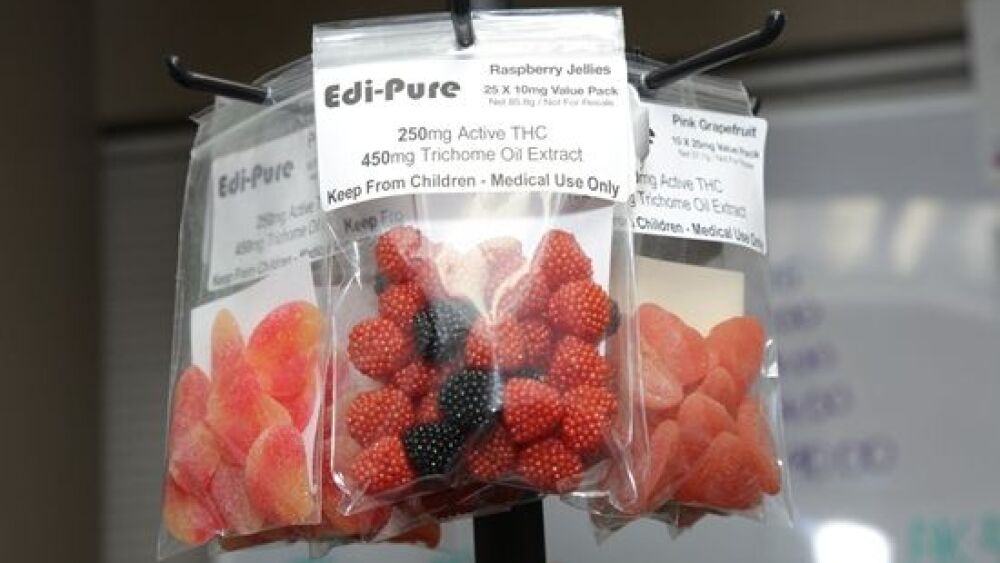While marijuana remains prohibited under federal law, voters approved marijuana referendums in several states in the November 2016 and state legislators are grappling with how they will regulate recreational marijuana, which includes marijuana edibles.
How edibles are packaged, and even what they look like, is being considered by lawmakers in most states with relaxed marijuana laws.
Dragging Recreational Marijuana Regulations
The last election cycle tripled the number of Americans living where recreational pot is now legal because the places where it was already legal -- Alaska, Colorado, Oregon, Washington and the District of Columbia -- account for less than 6 percent of the population combined.
However, state governments like Massachusetts are being accused of dragging their feet.
The Bay State recently pushed back its regulatory effective date to July 1st, 2018, according to Rolling Stone’s State-By-State Guide to Legal Pot. While it’s not legal to sell or buy recreational marijuana in Massachusetts, it’s legal to possess it. The group Yes on 4 is reportedly circulating 4/20 briefing papers at the Massachusetts State House urging lawmakers not to delay, saying the black market will figure out a way to make marijuana edibles available.
Case in point: some budding pot companies in Maine -- where marijuana retailers licenses are not yet available -- are giving away free marijuana edibles and are accepting donations for “packaging and handling,” according to the Portland Press Herald.
Marijuana Edibles Labeling Controversies
Edibles have been highly controversial because of high concentrations of the psychoactive ingredient THC in marijuana-infused cake, cookies, candy and lollipops, which may be more appealing to -- or may be accidentally eaten by -- children.
Pediatric accidental ingestion is a growing issue for EMS services. Colorado experienced an increased incidence of pediatric marijuana exposures, according to Howard Kim, MD at EMS World Expo in September 2016. Kim advised first responders to ask if marijuana is in the house when on pediatric calls.
While Rolling Stone reports that Nevada lawmakers are working quickly to set up recreational marijuana regulations, they aren’t treading lightly with edible labeling and packaging requirements. A bill -- one of nearly two dozen proposed to regulate the state’s new cannabis industry -- would ban edibles that look like candy, along with clear packaging, and also impose advertising requirements. KSNV News3LV reported the bill passed the Nevada Senate Judiciary Committee, and is up for a vote by the full Senate.
A 2014 Colorado murder case has also brought increased attention to how edibles are labeled.
Richard Kirk plead not guilty by reason of insanity, claiming that he was unaware of how consuming a marijuana edible would affect him before fatally shooting his wife Kristine, according to the Denver Post. Kirk’s attorneys claimed he did not know he was high risk for marijuana psychosis due to schizophrenia in his extended family, and that he ate the edible for back pain, according to the Associated Press. The AP also noted that Denver District Judge Martin Egelhoff did not address the marijuana edibles hallucination argument earlier this month when he sentenced Kirk to 30 years in prison under a second-degree murder plea agreement.
Though a toxicology report said Kirk’s tests from the night of the murder were low at 2.3 nanograms of THC per milliliter of blood, and the state’s legal limit for stoned driving is 5 nanograms of THC per milliliter, Kristine’s parents, Marti and Wayne Kohnke, filed a wrongful death suit on behalf of the Kirks’ three sons, naming the marijuana edible’s manufacturer and store selling it .
Marijuana Edibles Labeling Continues to Evolve
Since 2014, Colorado has been regulating how marijuana edibles are labeled, and many of the stores had taken to educating their consumers. In a 2014 National Public Radio story, staff at the the Fort Collins pot shop Organic Alternatives said they hand out cannabis industry edibles education cards with every purchase and tell consumers to “Start Low and Go Slow.” Edibles could be sold up to 100 mg THC per package.
In October 2016, the state enacted new requirements, including barring the word “candy” or “candies,” requiring a potency statement, stamping each edible serving and package with a universal THC symbol or packaging bulk items in single-serving, childproof containers, according to The Cannabist.
The state’s Department of Public Health & Environment’s marijuana information website, GoodtoKnowColorado.com advises: “The effects of marijuana can take up to four hours to peak after eating or drinking it. It’s a good idea to wait at least four hours before consuming more. The standard serving size is 10 mg of THC, so don’t use more than that to start.”
In Oregon, which allows individual counties to decide to legalize marijuana, edibles must be in childproof packaging and cannot contain more than 5 mg THC per serving and more than 50 mg THC per package, according to the Oregon Liquor Control Commission, which regulates marijuana. An additional labeling requirement is the statement: “Cannabinoid edibles can take up to 2 hours or more to take effect.”













